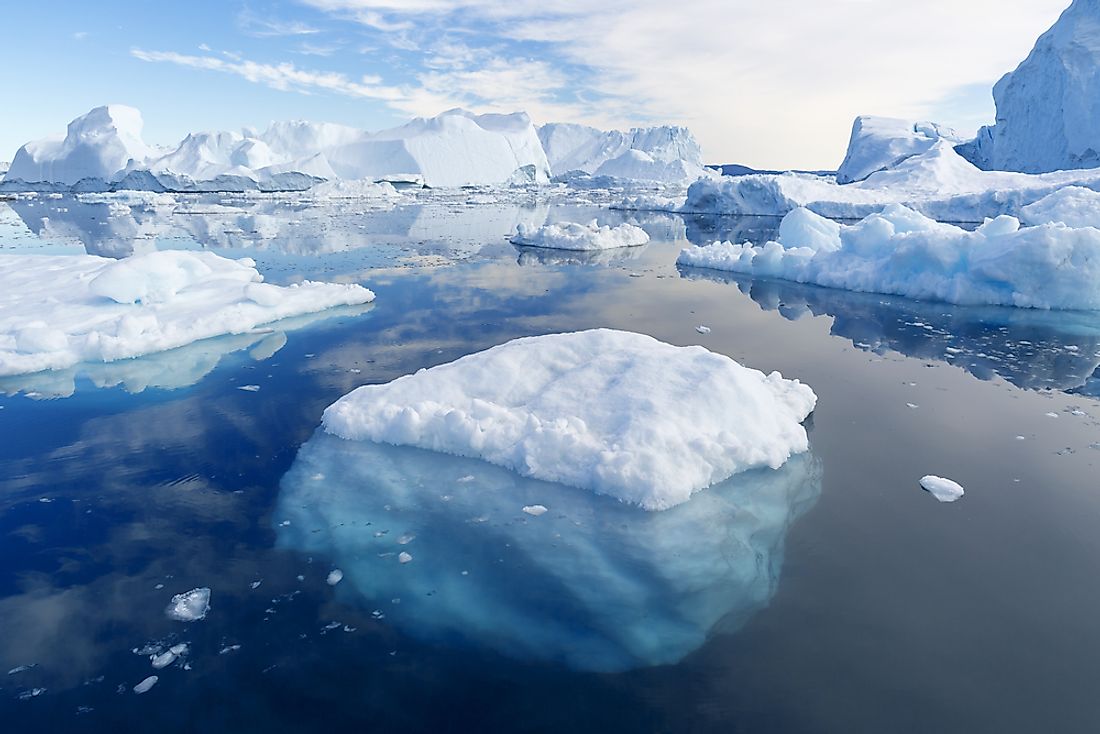Where Are Icebergs Most Commonly Found?

Icebergs are large masses of frozen fresh water floating independently in open waters after separating from a larger mass of ice such as an ice shelf or glacier. The most significant portion of an iceberg's mass, nearly 90%, is located beneath the water's surface. The US National Ocean Service (NOS) states that in order to be considered an iceberg, the mass of ice must be more than 16 feet above the sea level, and between 98 and 164 feet thick. The ice mass should also cover an area of approximately 5,382 square feet. Icebergs require specific conditions to form and are therefore found in particular regions of the world such as Antarctica and Greenland.
Antarctica
Icebergs are commonly located in Antarctica given the continent's cold temperatures. Some of the massive icebergs in Antarctica originated from the Ross Ice Shelf, which is situated in the Ross Dependency. Iceberg B-15 is one of the most well-known icebergs originating from the Ross Ice Shelf, and is also one of the largest icebergs ever recorded, covering an area of about 4,200 square miles in the Antarctic region. The iceberg broke apart into a number of pieces, the largest being B-15A that spanned an area approximately 2,500 square miles. Several other icebergs in Antarctica originated from the Filchner-Ronne Ice Shelf. One of the most well-known icebergs that broke off fromm the Filchner-Ronne Ice Shelf was A-38, which was considered among the largest detected in a decade. Another iceberg later broke off from A-38, named A-38B, and floated mainly in the South Atlantic. In 2018, scientists discovered an iceberg in Antarctica that was perfectly rectangular in shape. Due to its unique shape, the iceberg attracted significant attention, but scientists consider it to be a common occurrence.
Greenland
Greenland is another region in the world with numerous icebergs, due to the unique climate experienced in the region. Nearly 80% of the region's territory is covered by ice, which makes it an optimal location for the formation of icebergs. Icebergs were regularly used by communities in Greenland to identify seasons and towns. One of the most recent icebergs originating from Greenland broke away from the Petermann Glacier in 2010. The iceberg covered an area of about 100 square miles and was the largest iceberg observed in the Arctic since 1962. In Greenland, icebergs can be spotted near Tiniteqilaaq, Nuuk, and Paamiut. Icebergs are also commonly spotted in the southern region of Greenland, near towns such as Nanortalik and Qaqortoq.
The Danger Posed by Icebergs
Icebergs pose a significant threat to marine travel since they can cause shipwrecks due to their massive size. One of the most well-known tragedies caused by an iceberg was the sinking of the Titanic, which resulted in the death of more than 1,500 people in 1912. However, newer technology enables icebergs to be detected and monitored in order to prevent catastrophic collisions.











